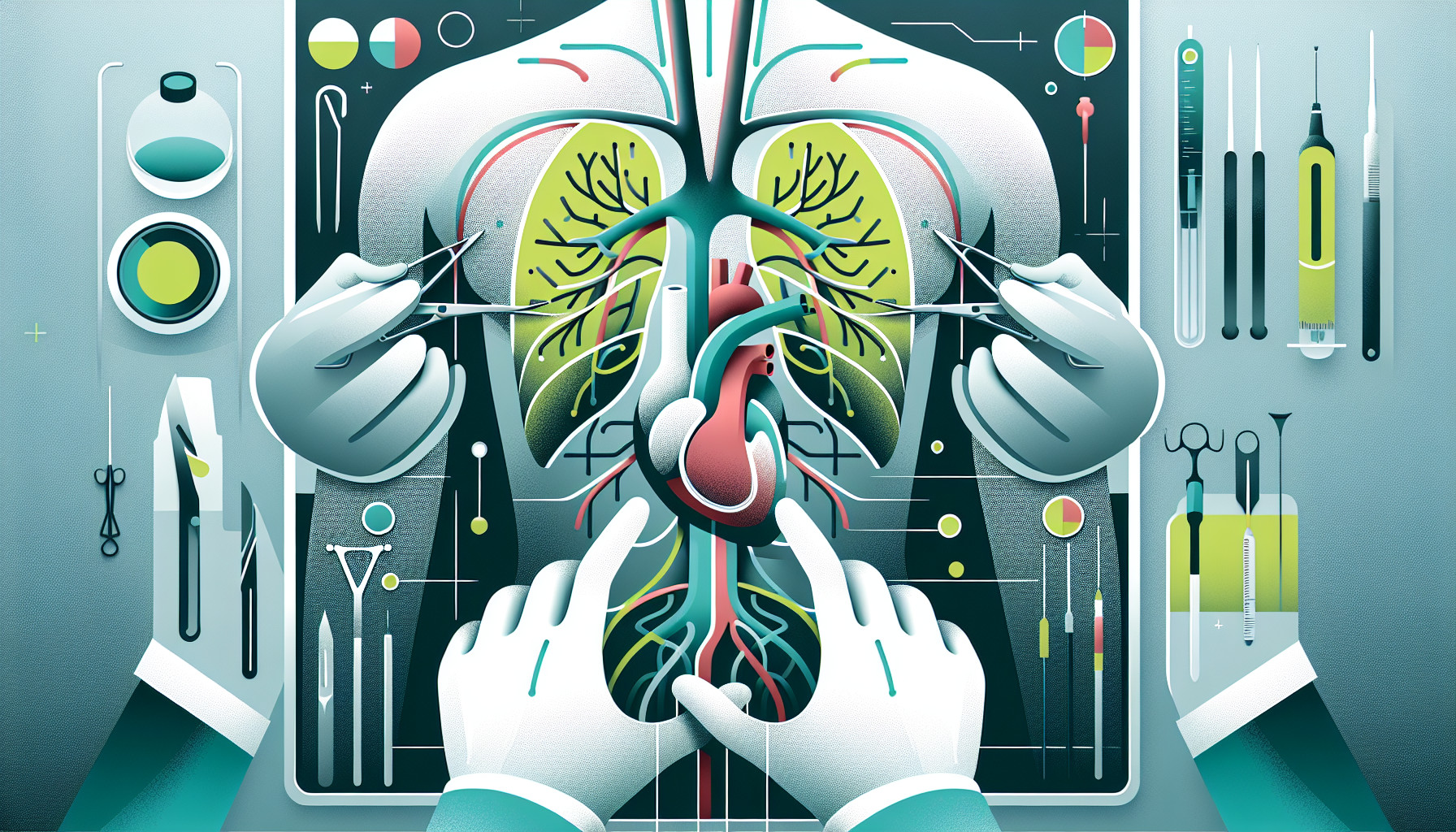Our Summary
This research paper discusses the results of a study examining the safety and effectiveness of a non-surgical treatment for infections following aortic graft surgery. The study involved 12 patients who had aortic graft surgeries, and who later developed an infection in the aorta or the area around it. These infections were treated with percutaneous drainage, a procedure where a small tube is inserted to drain the infected area, and antibiotics.
The study found that this type of treatment can be a safe and effective way to manage these infections, either as a temporary measure before definitive surgery or as a long-term treatment option. Half of the patients were alive at the time of the study’s conclusion, with a median follow-up period of 732 days. Three patients died due to unrelated causes, and three were lost to follow-up. No complications related to the drainage procedure were reported.
In simple terms, the study suggests that draining the infection and using antibiotics can be a good way to treat infections following aortic graft surgery, especially for patients who cannot or do not want to undergo additional surgery.
FAQs
- What is the non-surgical treatment discussed in this study for infections following aortic graft surgery?
- What were the results of the study on the safety and effectiveness of percutaneous drainage and antibiotics in treating infections after aortic graft surgery?
- How many patients were involved in the study, and what was the outcome of their treatment?
Doctor’s Tip
A helpful tip a doctor might give a patient about aortic aneurysm repair is to closely follow their post-operative care instructions, including taking prescribed medications, attending follow-up appointments, and avoiding activities that could put strain on the repaired area. It is important to report any new symptoms or concerns to their healthcare provider promptly to ensure the best possible outcome.
Suitable For
Patients who are typically recommended aortic aneurysm repair are those with a large aneurysm (5.5 cm or larger), rapid aneurysm growth, symptoms such as abdominal or back pain, or a family history of aortic aneurysms. Additionally, patients with certain risk factors such as high blood pressure, smoking, atherosclerosis, or a history of aortic dissection may also be recommended for aortic aneurysm repair. It is important for patients to discuss their individual case with their healthcare provider to determine the best course of treatment.
Timeline
Before aortic aneurysm repair:
- Patient may experience symptoms such as chest or back pain, shortness of breath, and dizziness.
- Patient undergoes diagnostic tests such as ultrasound, CT scan, or MRI to confirm the presence of an aortic aneurysm.
- Patient may be monitored closely to prevent the aneurysm from rupturing.
- Surgery is recommended if the aneurysm is large or causing symptoms.
After aortic aneurysm repair:
- Patient undergoes aortic aneurysm repair surgery, which can be done through open surgery or minimally invasive techniques such as endovascular repair.
- Patient may stay in the hospital for a few days to recover from the surgery.
- Patient may need to take medications to prevent blood clots or control blood pressure.
- Patient will have follow-up appointments with their healthcare provider to monitor their recovery and ensure the success of the surgery.
- Patient may need to make lifestyle changes such as quitting smoking, eating a healthy diet, and exercising regularly to prevent future complications.
What to Ask Your Doctor
Some questions a patient should ask their doctor about aortic aneurysm repair include:
- What are the different treatment options available for repairing an aortic aneurysm, and what are the risks and benefits of each option?
- How do I know if I need surgery to repair my aortic aneurysm, and what factors will you consider when making this decision?
- What are the potential complications associated with aortic aneurysm repair surgery, and how will you monitor and manage these risks?
- How long is the recovery process after aortic aneurysm repair surgery, and what can I expect in terms of pain, mobility, and rehabilitation?
- What follow-up care will I need after aortic aneurysm repair surgery, and how often will I need to see a doctor for check-ups and monitoring?
- Are there any lifestyle changes or medications I should consider after aortic aneurysm repair surgery to reduce the risk of future complications?
- What is the success rate of aortic aneurysm repair surgery, and what are the chances of the aneurysm recurring or developing in another location?
- Are there any alternative or non-surgical treatments available for aortic aneurysm repair, and how do they compare to traditional surgical approaches?
- How experienced are you and your medical team in performing aortic aneurysm repair surgery, and what is the hospital’s success rate with this procedure?
- Are there any ongoing clinical trials or research studies related to aortic aneurysm repair that I should be aware of?
Reference
Authors: Kennedy SA, Kennedy MK, Lindsay TF, Byrne J, Jaberi A, Gold WL, Tan K, Mafeld S. Journal: Vasc Endovascular Surg. 2022 May;56(4):369-375. doi: 10.1177/15385744221075136. Epub 2022 Feb 18. PMID: 35180037
